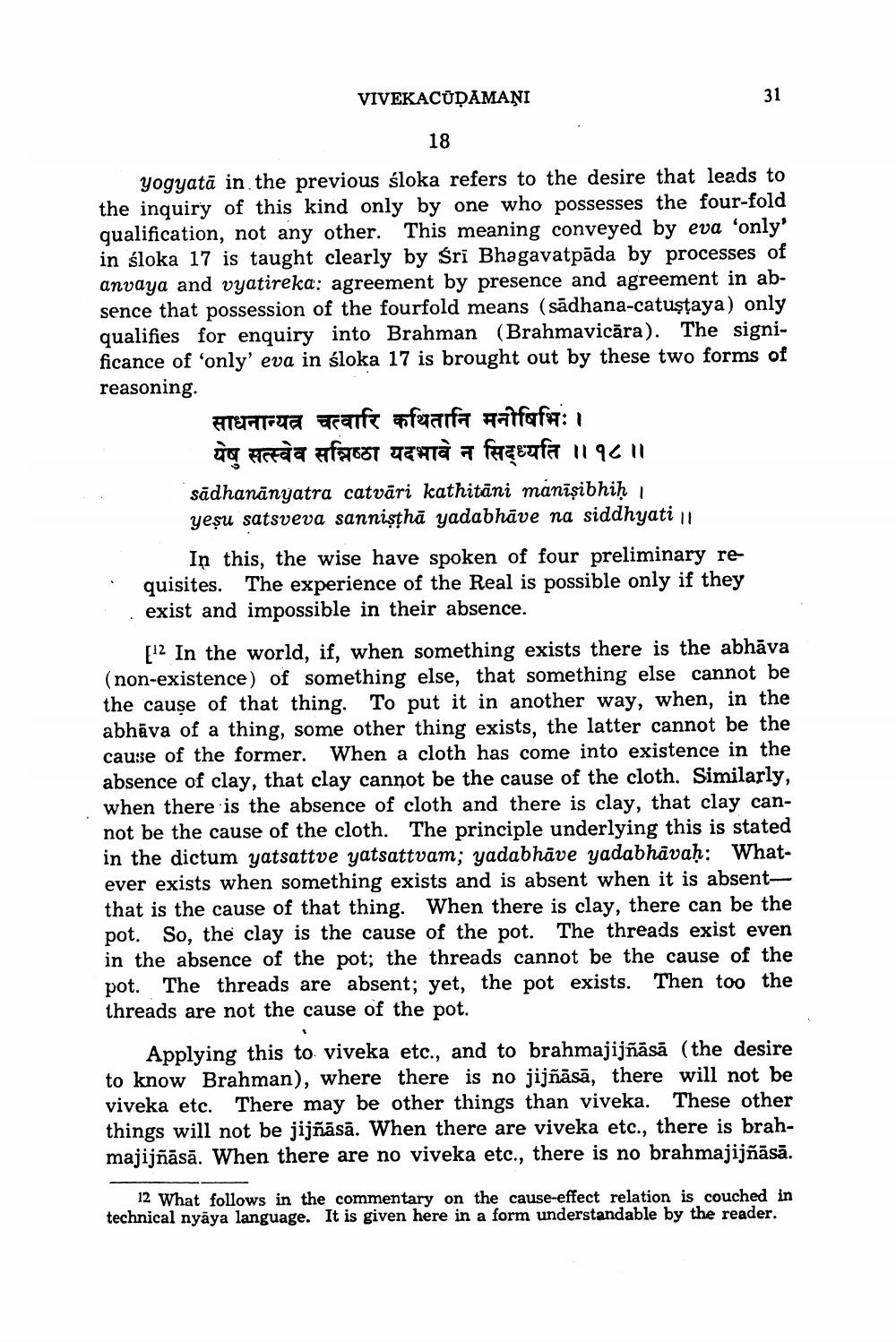________________
VIVEKACŪDAMANI
18
yogyatā in the previous śloka refers to the desire that leads to the inquiry of this kind only by one who possesses the four-fold qualification, not any other. This meaning conveyed by eva 'only' in sloka 17 is taught clearly by Sri Bhagavatpada by processes of anvaya and vyatireka: agreement by presence and agreement in absence that possession of the fourfold means (sādhana-catuştaya) only qualifies for enquiry into Brahman (Brahmavicāra). The significance of 'only' eva in śloka 17 is brought out by these two forms of reasoning.
साधनान्यत्र चत्वारि कथितानि मनीषिभिः ।
येषु सत्स्वेव सन्निष्ठा यदभावे न सिद्ध्यति ॥१८॥ sādhanānyatra catvāri kathitāni manīşibhiḥ 1 yesu satsveva sannisthā yadabhāve na siddhyati u
In this, the wise have spoken of four preliminary requisites. The experience of the Real is possible only if they exist and impossible in their absence.
[12 In the world, if, when something exists there is the abhāva (non-existence of something else, that something else cannot be the cause of that thing. To put it in another way, when, in the abhāva of a thing, some other thing exists, the latter cannot be the cause of the former. When a cloth has come into existence in the absence of clay, that clay cannot be the cause of the cloth. Similarly, when there is the absence of cloth and there is clay, that clay cannot be the cause of the cloth. The principle underlying this is stated in the dictum yatsattve yatsattvam; yadabhāve yadabhāvah: Whatever exists when something exists and is absent when it is absentthat is the cause of that thing. When there is clay, there can be the pot. So, the clay is the cause of the pot. The threads exist even in the absence of the pot; the threads cannot be the cause of the pot. The threads are absent; yet, the pot exists. Then too the threads are not the cause of the pot.
Applying this to viveka etc., and to brahmajijñāsā (the desire to know Brahman), where there is no jijñāsā, there will not be viveka etc. There may be other things than viveka. These other things will not be jijñāsā. When there are viveka etc., there is brahmajijñāsā. When there are no viveka etc., there is no brahmajijñāsā.
12 What follows in the commentary on the cause-effect relation is couched in technical nyaya language. It is given here in a form understandable by the reader.




